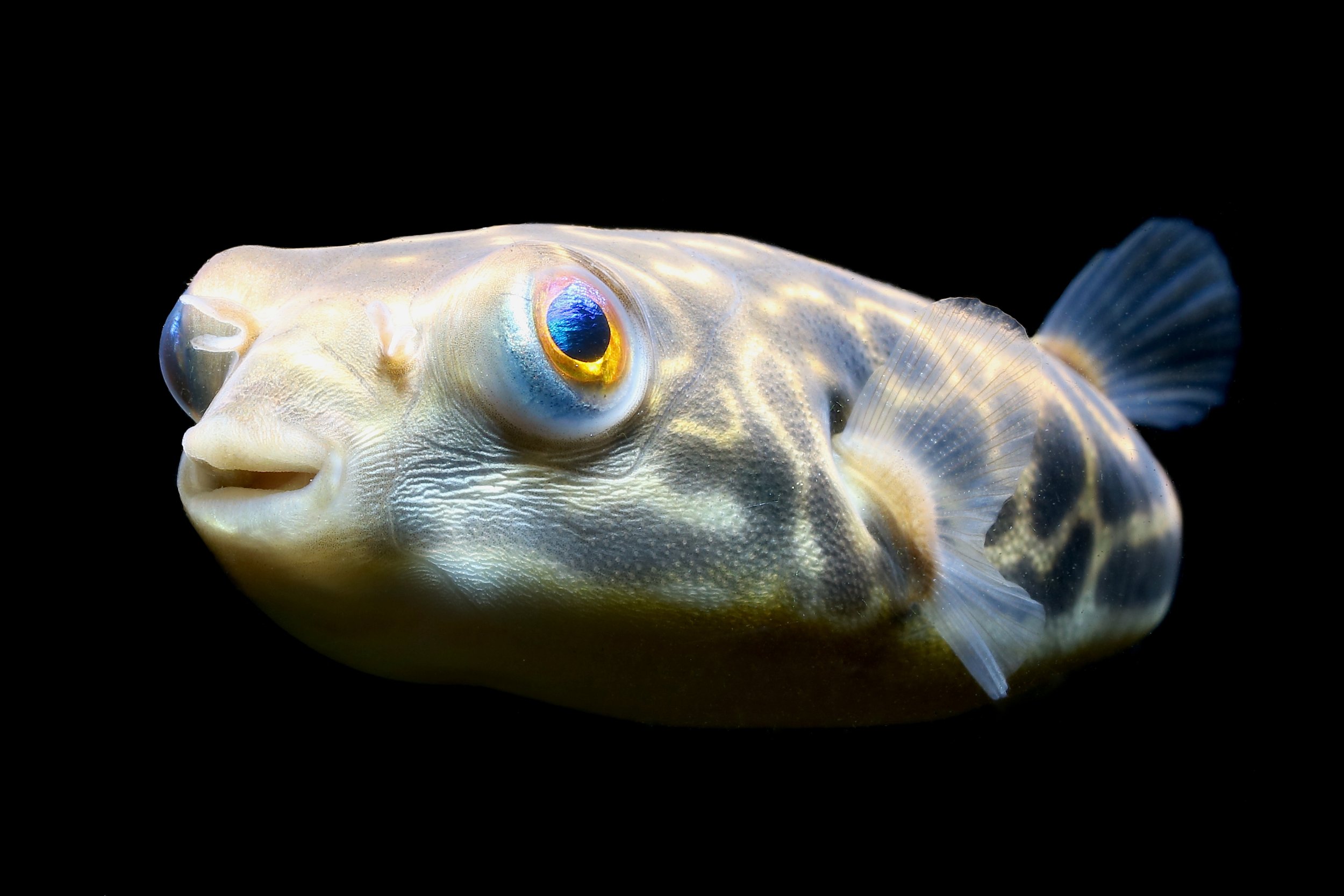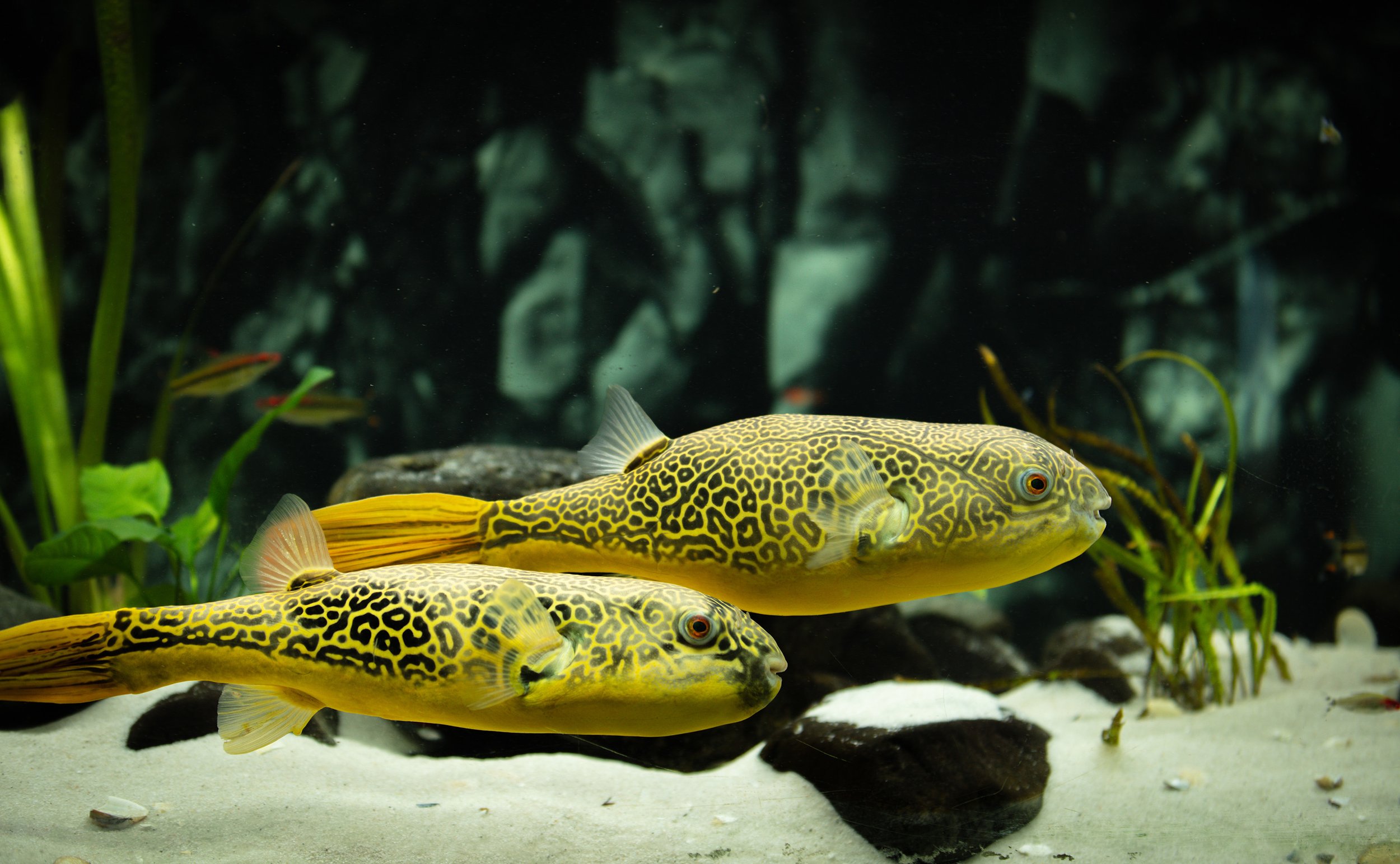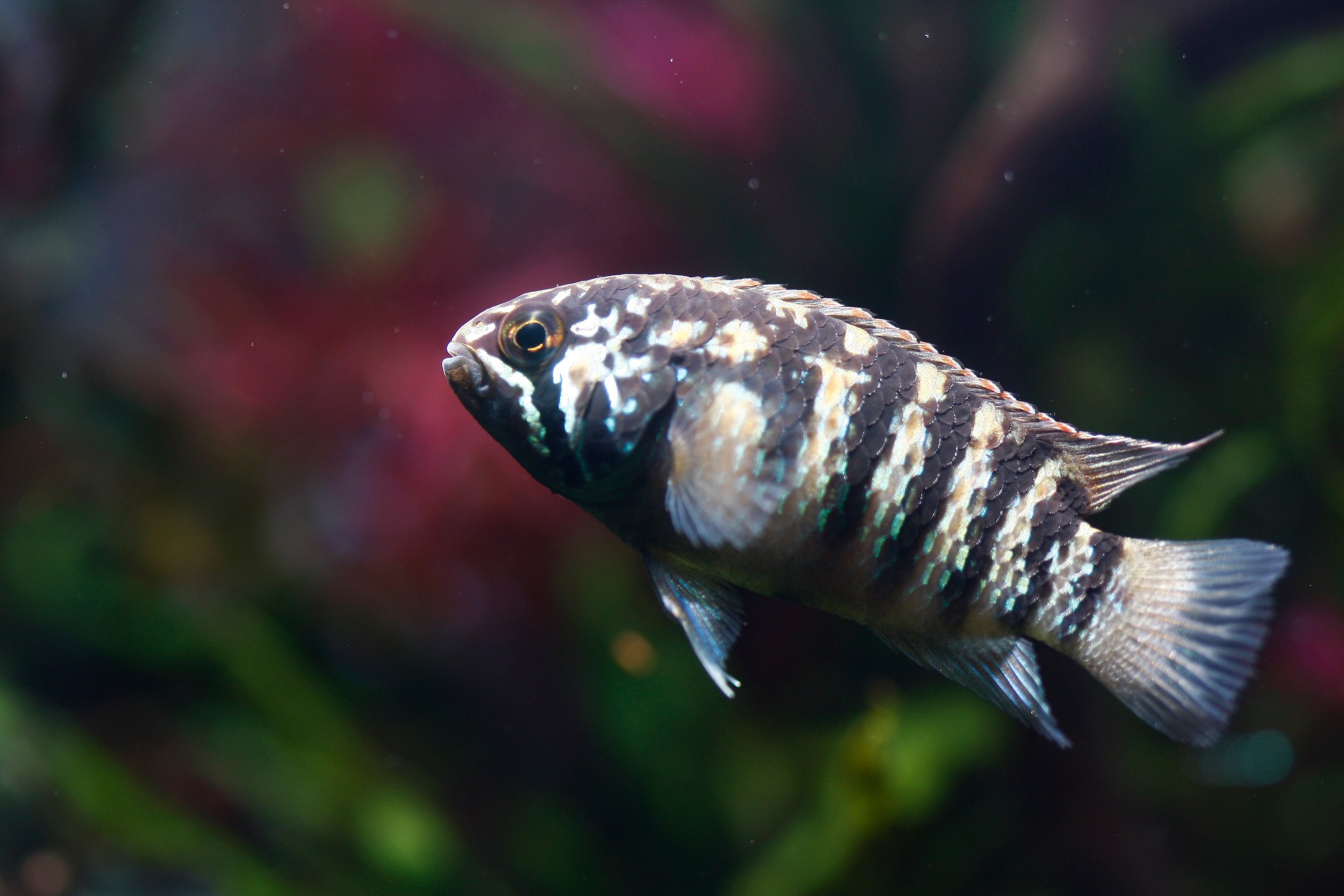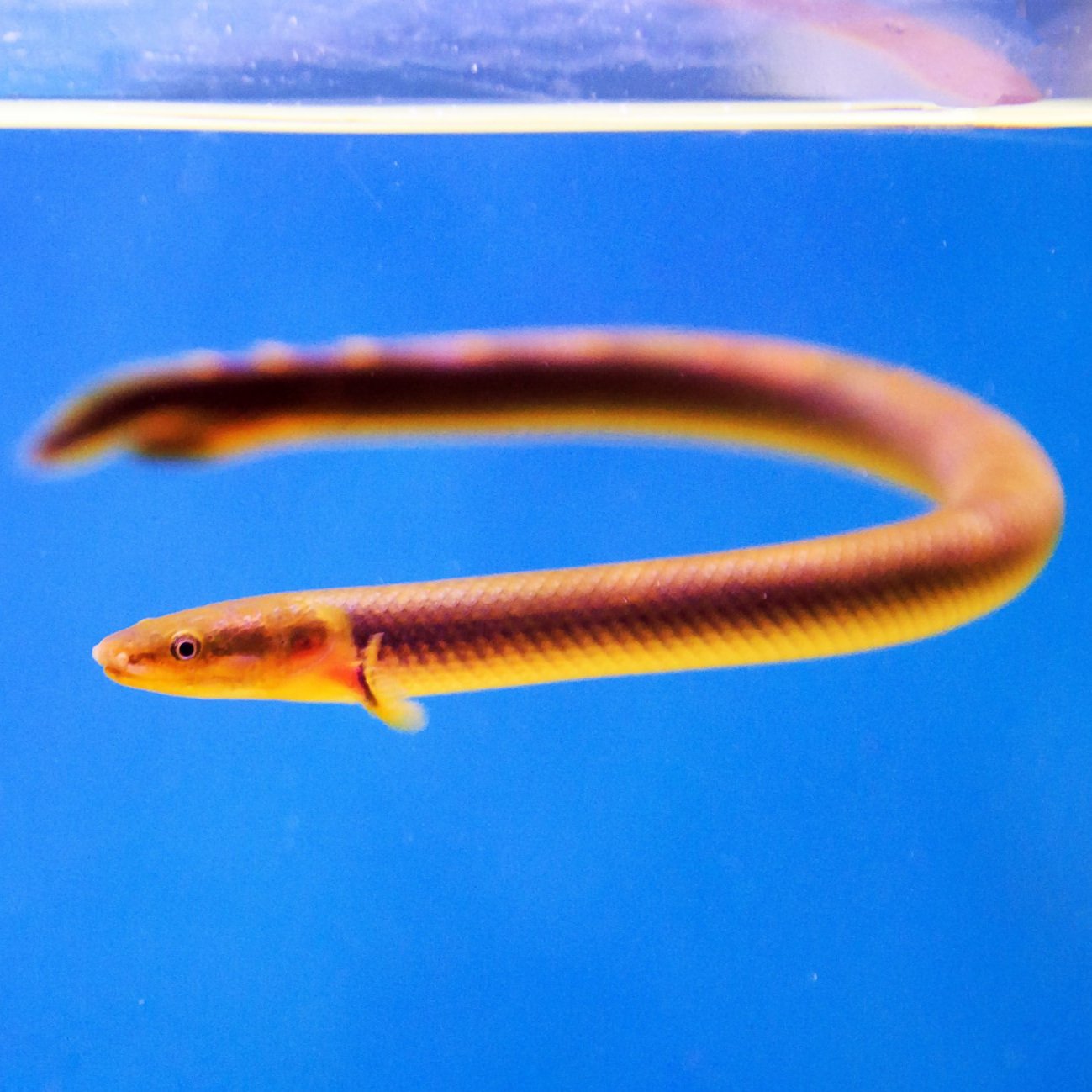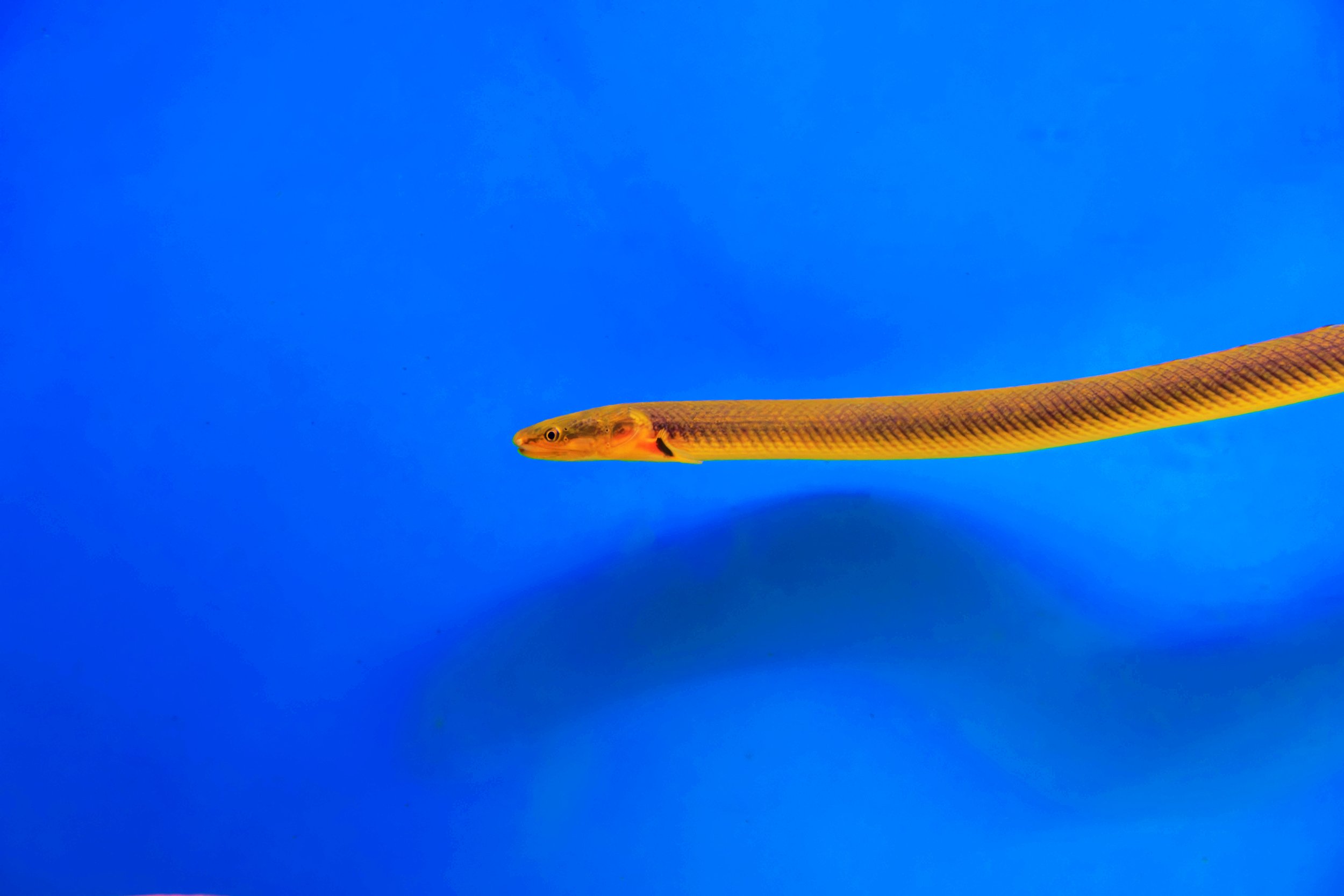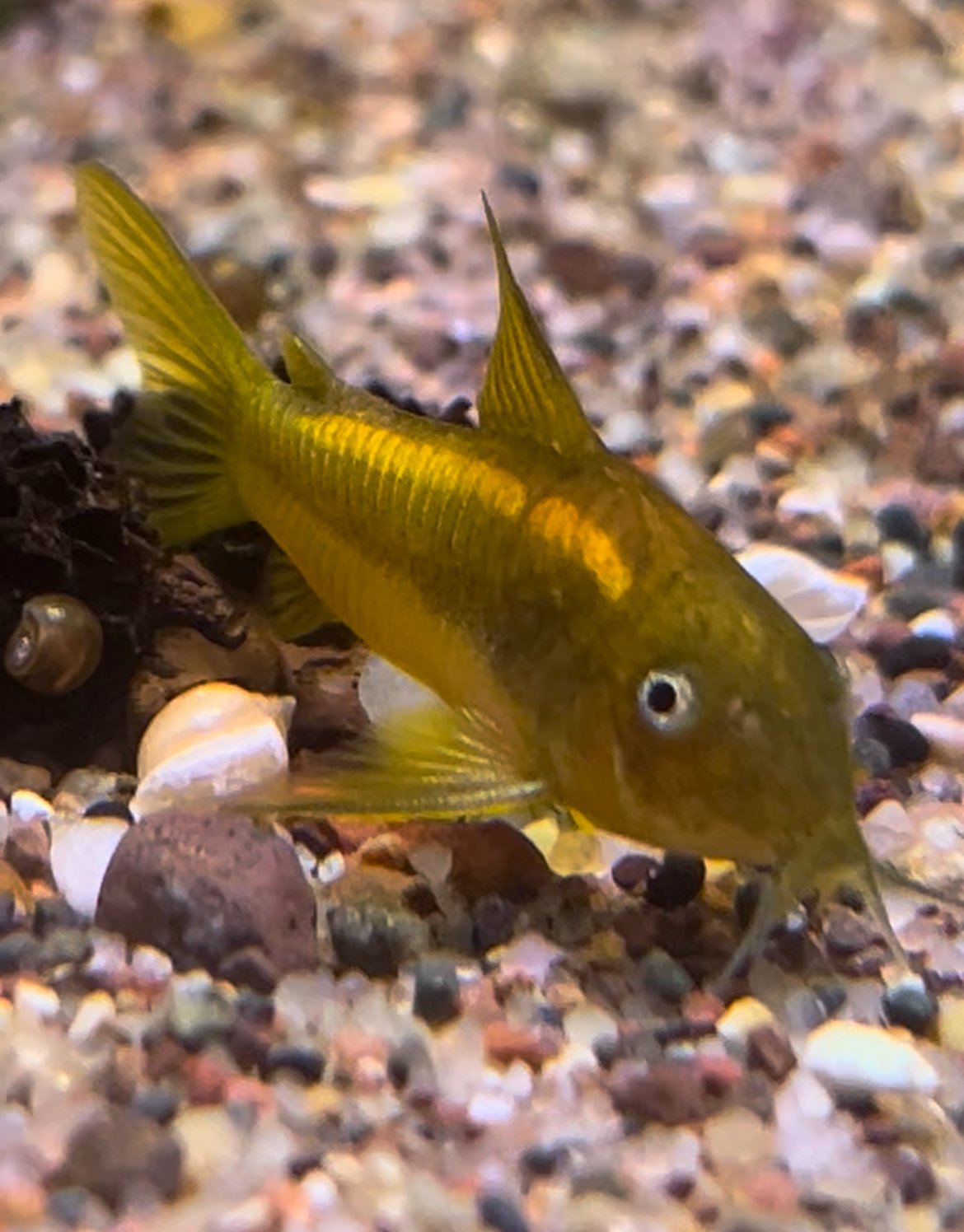 Image 1 of 3
Image 1 of 3

 Image 2 of 3
Image 2 of 3

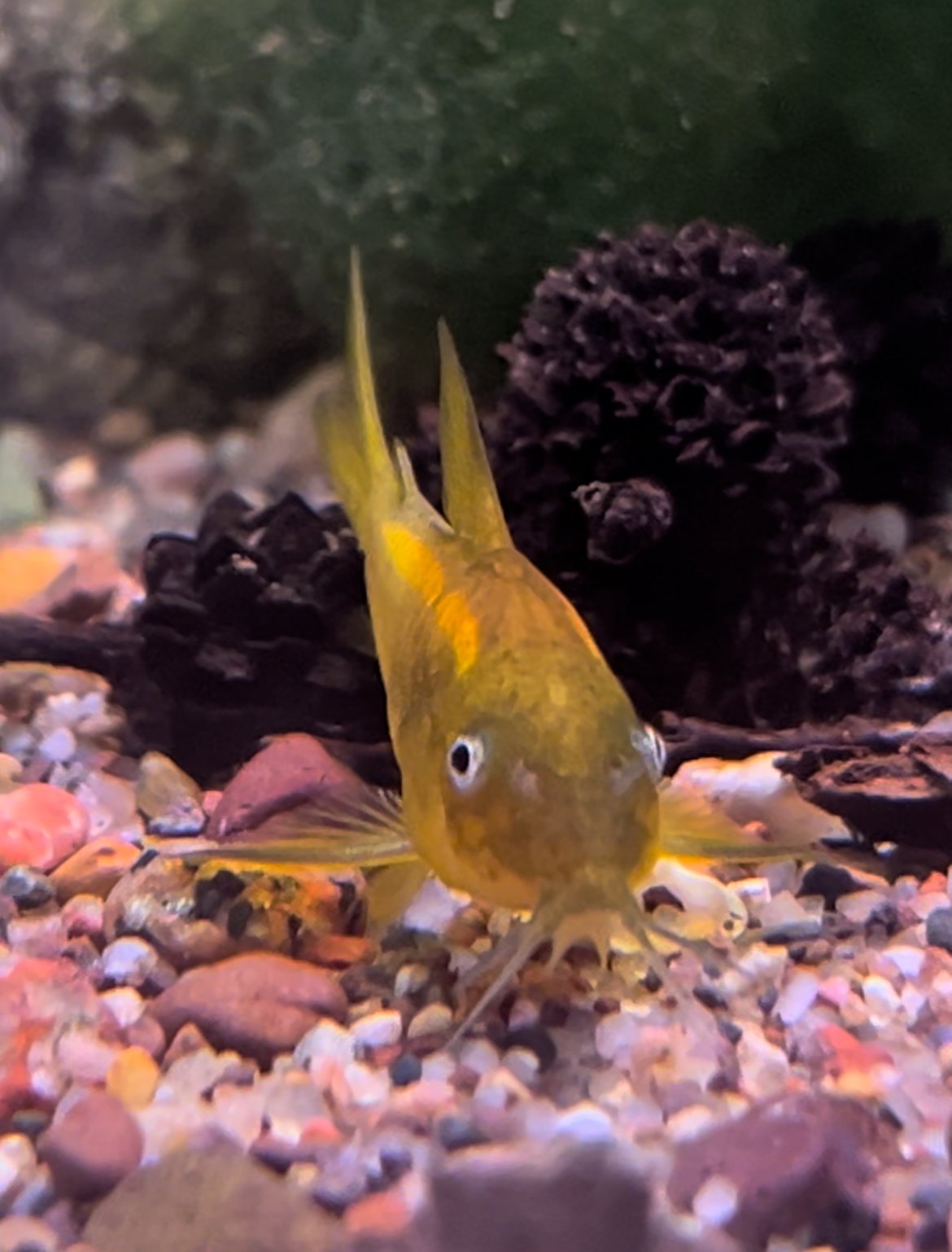 Image 3 of 3
Image 3 of 3




Orange Laser Cory
The Orange Laser Corydoras, scientifically known as Corydoras aeneus 'Orange Laser', is a striking and highly sought-after freshwater catfish species admired by aquarists for its vibrant coloration and peaceful nature. This particular variety is a selectively bred strain of the more common Bronze Corydoras, known for its distinctive bright orange stripe running along its back. Originating from the rivers and streams of South America, particularly in Peru, these catfish make a beautiful and active addition to community aquariums.
Physically, the Orange Laser Corydoras is characterized by its robust, slightly flattened body, which is typical of the Corydoras genus. The standout feature of this species is the vivid, metallic orange stripe that runs from the top of the head, over the dorsal fin, and down towards the tail. This brilliant stripe contrasts beautifully with the fish’s otherwise silvery or bronze-colored body. Mature specimens typically reach lengths of around 2.5 to 3 inches (6 to 7.5 centimeters), making them suitable for a variety of aquarium sizes.
In aquariums, Orange Laser Corydoras thrive in well-planted tanks with soft substrates, such as sand or fine gravel, which allow them to forage comfortably. These catfish are social creatures and should be kept in groups of at least five individuals to ensure their well-being and encourage natural shoaling behavior. They appreciate having plenty of hiding spots provided by rocks, driftwood, and dense vegetation, which help them feel secure and reduce stress.
Water parameters for Orange Laser Corydoras should closely resemble those of their native environment. They prefer slightly acidic to neutral water with a pH range of 6.5 to 7.5 and temperatures between 72 to 78°F (22 to 26°C). Regular water changes and proper filtration are essential to maintain clean and stable water conditions, as these fish are sensitive to poor water quality.
Feeding Orange Laser Corydoras is relatively straightforward, as they are omnivorous scavengers with hearty appetites. They feed on a variety of foods, including high-quality sinking pellets, flakes, and granules. They also enjoy live or frozen foods such as bloodworms, brine shrimp, and daphnia. Additionally, offering vegetable matter in the form of blanched spinach or zucchini can provide essential nutrients and dietary variety.
Breeding Orange Laser Corydoras in captivity is possible with the right conditions and setup. A separate breeding tank with soft substrate and gentle filtration can stimulate spawning behavior. During breeding, the female lays eggs, which are then fertilized by the male. The female typically deposits the fertilized eggs on aquarium glass, leaves, or other flat surfaces. The eggs hatch within a few days, and the fry can be raised on a diet of specialized fry foods or powdered algae until they are large enough to consume standard fish fare.
Overall, the Orange Laser Corydoras is a captivating and valuable addition to freshwater aquariums, prized for its vibrant orange stripe, peaceful nature, and sociable behavior. With proper care and attention to their specific requirements, these stunning catfish can thrive and bring color, activity, and enjoyment to aquarists of all levels of experience, enhancing the beauty and diversity of any aquatic environment.
The Orange Laser Corydoras, scientifically known as Corydoras aeneus 'Orange Laser', is a striking and highly sought-after freshwater catfish species admired by aquarists for its vibrant coloration and peaceful nature. This particular variety is a selectively bred strain of the more common Bronze Corydoras, known for its distinctive bright orange stripe running along its back. Originating from the rivers and streams of South America, particularly in Peru, these catfish make a beautiful and active addition to community aquariums.
Physically, the Orange Laser Corydoras is characterized by its robust, slightly flattened body, which is typical of the Corydoras genus. The standout feature of this species is the vivid, metallic orange stripe that runs from the top of the head, over the dorsal fin, and down towards the tail. This brilliant stripe contrasts beautifully with the fish’s otherwise silvery or bronze-colored body. Mature specimens typically reach lengths of around 2.5 to 3 inches (6 to 7.5 centimeters), making them suitable for a variety of aquarium sizes.
In aquariums, Orange Laser Corydoras thrive in well-planted tanks with soft substrates, such as sand or fine gravel, which allow them to forage comfortably. These catfish are social creatures and should be kept in groups of at least five individuals to ensure their well-being and encourage natural shoaling behavior. They appreciate having plenty of hiding spots provided by rocks, driftwood, and dense vegetation, which help them feel secure and reduce stress.
Water parameters for Orange Laser Corydoras should closely resemble those of their native environment. They prefer slightly acidic to neutral water with a pH range of 6.5 to 7.5 and temperatures between 72 to 78°F (22 to 26°C). Regular water changes and proper filtration are essential to maintain clean and stable water conditions, as these fish are sensitive to poor water quality.
Feeding Orange Laser Corydoras is relatively straightforward, as they are omnivorous scavengers with hearty appetites. They feed on a variety of foods, including high-quality sinking pellets, flakes, and granules. They also enjoy live or frozen foods such as bloodworms, brine shrimp, and daphnia. Additionally, offering vegetable matter in the form of blanched spinach or zucchini can provide essential nutrients and dietary variety.
Breeding Orange Laser Corydoras in captivity is possible with the right conditions and setup. A separate breeding tank with soft substrate and gentle filtration can stimulate spawning behavior. During breeding, the female lays eggs, which are then fertilized by the male. The female typically deposits the fertilized eggs on aquarium glass, leaves, or other flat surfaces. The eggs hatch within a few days, and the fry can be raised on a diet of specialized fry foods or powdered algae until they are large enough to consume standard fish fare.
Overall, the Orange Laser Corydoras is a captivating and valuable addition to freshwater aquariums, prized for its vibrant orange stripe, peaceful nature, and sociable behavior. With proper care and attention to their specific requirements, these stunning catfish can thrive and bring color, activity, and enjoyment to aquarists of all levels of experience, enhancing the beauty and diversity of any aquatic environment.
The Orange Laser Corydoras, scientifically known as Corydoras aeneus 'Orange Laser', is a striking and highly sought-after freshwater catfish species admired by aquarists for its vibrant coloration and peaceful nature. This particular variety is a selectively bred strain of the more common Bronze Corydoras, known for its distinctive bright orange stripe running along its back. Originating from the rivers and streams of South America, particularly in Peru, these catfish make a beautiful and active addition to community aquariums.
Physically, the Orange Laser Corydoras is characterized by its robust, slightly flattened body, which is typical of the Corydoras genus. The standout feature of this species is the vivid, metallic orange stripe that runs from the top of the head, over the dorsal fin, and down towards the tail. This brilliant stripe contrasts beautifully with the fish’s otherwise silvery or bronze-colored body. Mature specimens typically reach lengths of around 2.5 to 3 inches (6 to 7.5 centimeters), making them suitable for a variety of aquarium sizes.
In aquariums, Orange Laser Corydoras thrive in well-planted tanks with soft substrates, such as sand or fine gravel, which allow them to forage comfortably. These catfish are social creatures and should be kept in groups of at least five individuals to ensure their well-being and encourage natural shoaling behavior. They appreciate having plenty of hiding spots provided by rocks, driftwood, and dense vegetation, which help them feel secure and reduce stress.
Water parameters for Orange Laser Corydoras should closely resemble those of their native environment. They prefer slightly acidic to neutral water with a pH range of 6.5 to 7.5 and temperatures between 72 to 78°F (22 to 26°C). Regular water changes and proper filtration are essential to maintain clean and stable water conditions, as these fish are sensitive to poor water quality.
Feeding Orange Laser Corydoras is relatively straightforward, as they are omnivorous scavengers with hearty appetites. They feed on a variety of foods, including high-quality sinking pellets, flakes, and granules. They also enjoy live or frozen foods such as bloodworms, brine shrimp, and daphnia. Additionally, offering vegetable matter in the form of blanched spinach or zucchini can provide essential nutrients and dietary variety.
Breeding Orange Laser Corydoras in captivity is possible with the right conditions and setup. A separate breeding tank with soft substrate and gentle filtration can stimulate spawning behavior. During breeding, the female lays eggs, which are then fertilized by the male. The female typically deposits the fertilized eggs on aquarium glass, leaves, or other flat surfaces. The eggs hatch within a few days, and the fry can be raised on a diet of specialized fry foods or powdered algae until they are large enough to consume standard fish fare.
Overall, the Orange Laser Corydoras is a captivating and valuable addition to freshwater aquariums, prized for its vibrant orange stripe, peaceful nature, and sociable behavior. With proper care and attention to their specific requirements, these stunning catfish can thrive and bring color, activity, and enjoyment to aquarists of all levels of experience, enhancing the beauty and diversity of any aquatic environment.


